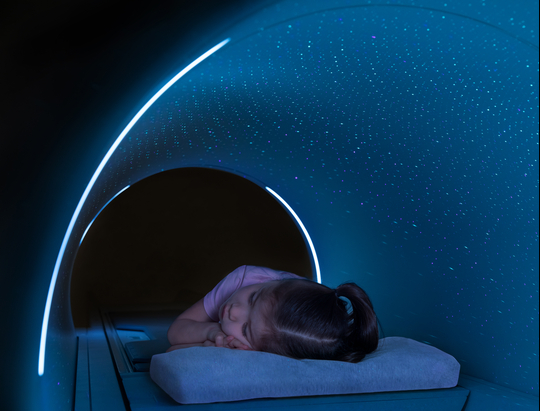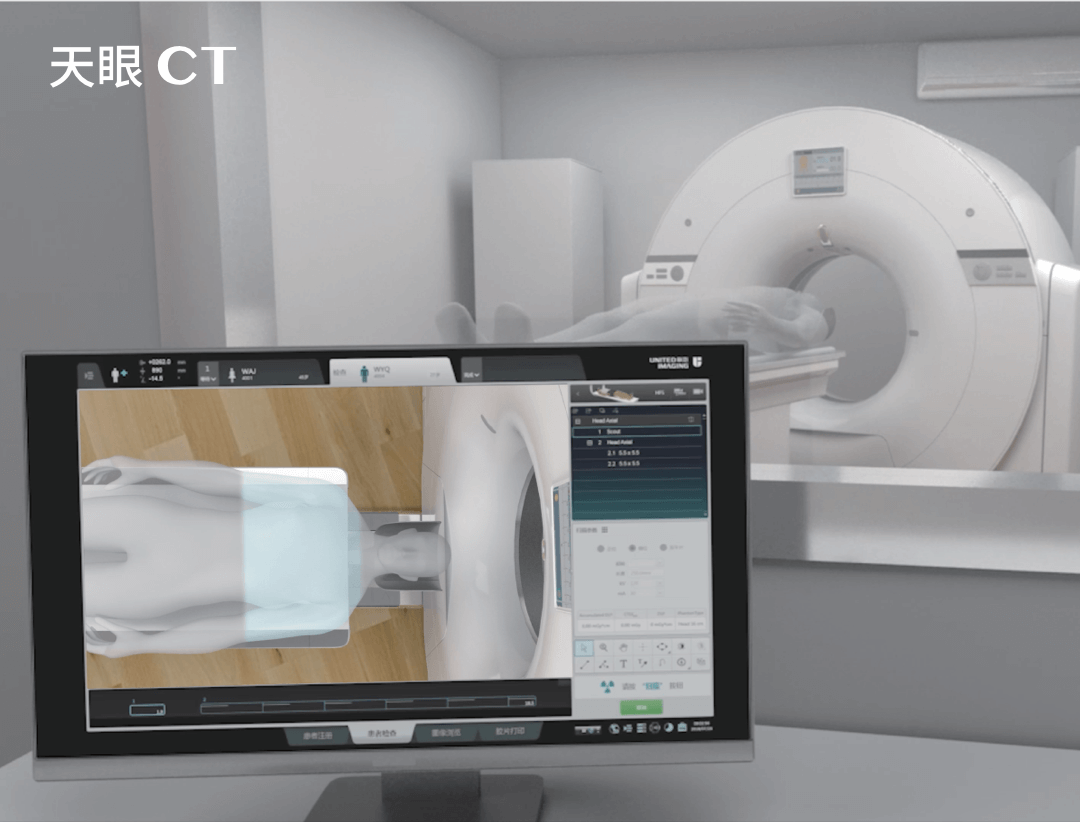FLAIR sequence in MRI – what is it?
Magnetic resonance imaging (MRI) is one of the most important tools in medical diagnostic imaging. Importantly, this technology offers multiple possibilities in this regard due to the many different MRI sequences available during examinations. These include the FLAIR (Fluid-Attenuated Inversion Recovery) sequence, which is distinguished by its unique features. What exactly does the FLAIR sequence consist of and when is it applicable?
MRI sequences
In essence, magnetic resonance imaging is based on the phenomenon of nuclear magnetic resonance. Over the years, thanks to technological advances, new sequences have emerged that enable us to obtain better images of different areas of the body. Currently, we have a huge range of options for imaging the body using various sequences that differ in terms of their parameters such as pulse duration, echo time (TE) or repetition time (TR).
The primary sequences used in MRI today include:
- T1-weighted – these sequences produce high-contrast images of tissues with different water and fat content. In T1-weighted images, fatty tissues are bright, while areas that contain a lot of water are dark.
- T2-weighted – these sequences produce images in which areas with a lot of water are bright and fatty tissues are dark. They are particularly useful in detecting pathologies such as edema or tumours.
- FLAIR (Fluid-Attenuated Inversion Recovery) – this is a special type of T2-weighted sequence that suppresses the cerebrospinal fluid signal, which allows for better visualisation of certain pathological changes in the brain.
- DWI (Diffusion Weighted Imaging) – this sequence allows imaging of water diffusion processes in tissues. It is particularly useful in detecting early signs of stroke.
- PD (Proton Density) – these sequences are optimised to detect differences in proton density in various tissues. PD images are more sensitive to subtle differences in tissue water content than T1- or T2-weighted images.
- Angiography sequences (MRA) – these allow imaging of blood vessels without the need to administer contrast.
- Contrast-enhanced sequences – after intravenous contrast administration, certain areas or structures become more clearly visible on MRI images.
- Functional sequences (fMRI) – these allow real-time imaging of brain activity, for instance when the patient is performing various tasks.
Of course, these are just a few of the basic sequences used in MR examinations. There are many other specialised sequences tailored to specific diagnostic needs. The choice of the right sequence depends on the information that the doctor wants to obtain from the examination and the area of the body to be examined.
What is the FLAIR sequence
The FLAIR sequence was introduced as a modification of the T2-weighted sequence in order to suppress the cerebrospinal fluid (CSF) signal, allowing for better visualisation of certain pathologies. As a result, areas of the brain that would normally be masked by the bright fluid signal become more visible, which makes this sequence particularly useful in detecting pathologies in close proximity to the brain ventricles or brain surface.
FLAIR sequence application
The FLAIR sequence is used to examine solid structures, and thus it is indispensable in diagnosing areas which contain little water, such as the brain’s white matter. This sequence allows detection of lesions such as strokes, tumours or abscesses. In clinical practice, the FLAIR sequence is often used in diagnosing the nervous system, especially where multiple sclerosis or stroke is suspected, allowing effective detection of demyelinating lesions. When this sequence is used, areas with a lot of water are shown in bright colors, while those with little water are darker.
Early detection of diseases
As a result, the FLAIR sequence has become an integral part of MRI examinations, offering doctors the ability to more accurately diagnose many conditions, especially those of neurological origin. This sequence makes it possible to show areas such as the white matter with high precision, enabling early detection of many pathologies.
It should of course be noted that the FLAIR sequence is generally combined with other sequences, such as DWI, angiographic, T1-weighted and T2-weighted sequences, among others. In combination, these allow for an extremely accurate and multidimensional imaging examination.
In conclusion, in the era of modern medicine, technologies such as FLAIR are invaluable in providing accurate and precise diagnostic data, primarily in the field of neurology and pathologies within the brain, which translates to more effective treatment for patients. Most importantly, modern MRI machines enable doctors to use this advanced technology in their daily clinical practice, helping to improve the quality of medical care.
United Imaging Healthcare MRI machines are equipped with state-of-the-art features that enable examinations to be conducted using the FLAIR sequence. If you have more questions about this topic or would like to review our product catalog, including MRI machines that offer the FLAIR sequence, please feel free to contact us!
*ATTENTION! The information contained in this article is for informational purposes and is not a substitute for professional medical advice. Each case should be evaluated individually by a doctor. Consult with him or her before making any health decisions.



